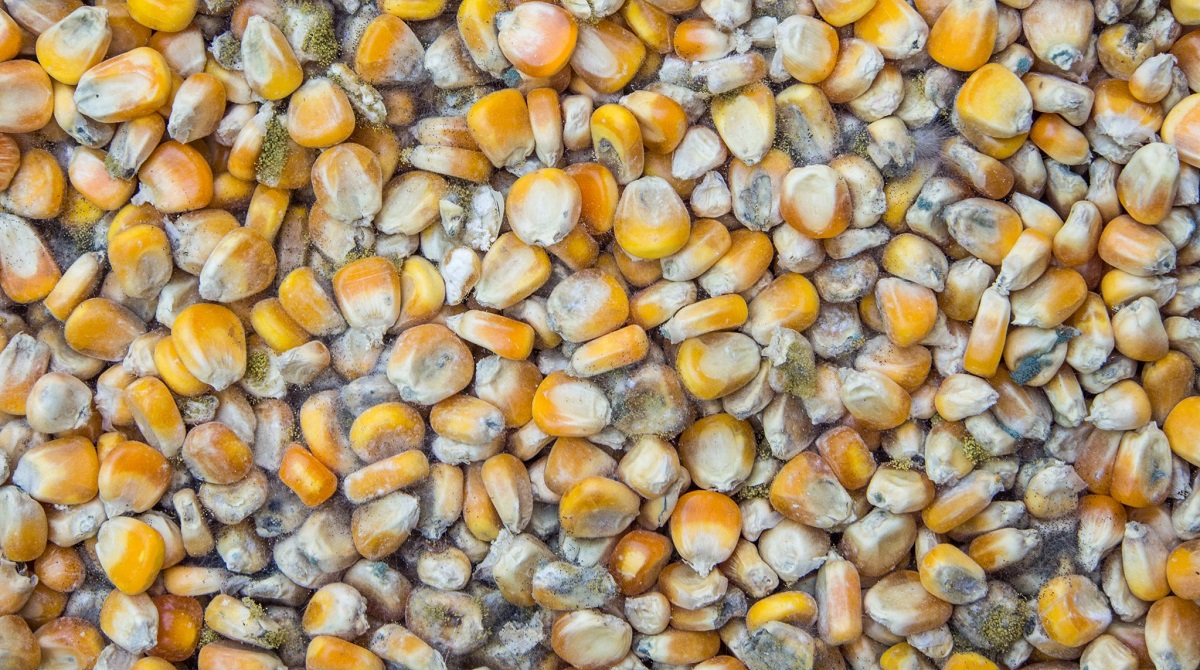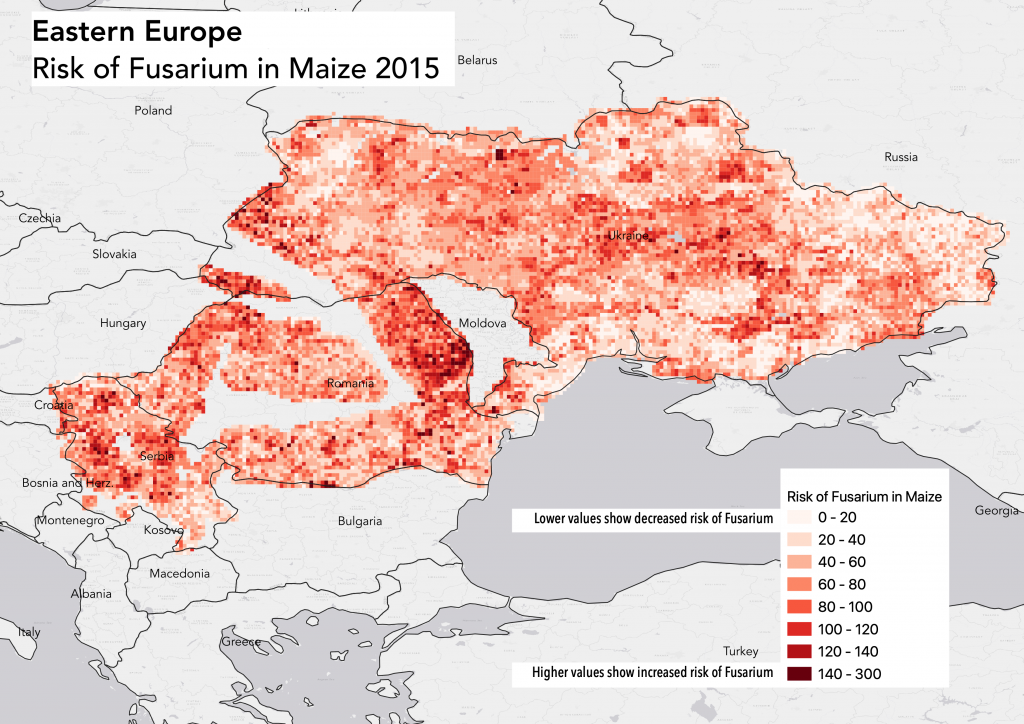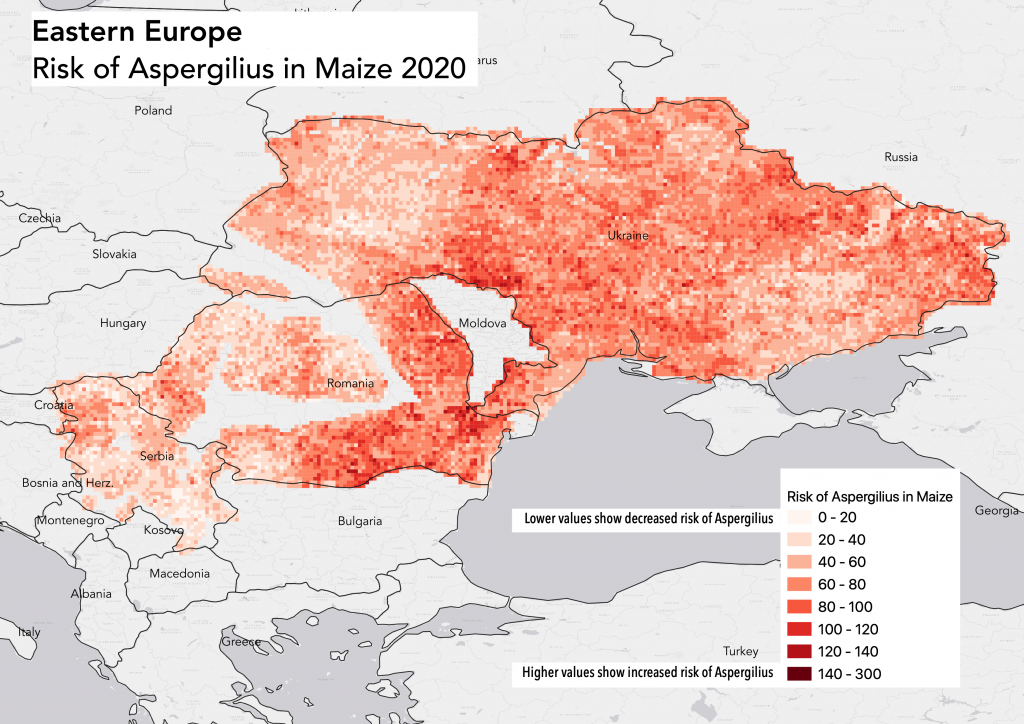
Source: https://www.awhere.com/weather-based-monitoring-for-food-security-example-of-mycotoxins-in-maize/
Optimizing mycotoxin monitoring of our grains supplies to ensure food safety
Maize farmers across Europe face a range of production challenges. Fungal diseases on maize grain impacts yield, quality and in some cases create toxins such as aflatoxin in the case the Aspergillus flavus in maize that are extremely carcinogenic. Tools to monitor and mitigate the risk of these fungal diseases are key to ensuring food safety across Europe.
aWhere has developed models for predicting the risk for the two most important mycotoxins-producing fungi: Aspergillus spp. and Fusarium spp.. Based on weather parameters that define the risk of fungal growth and mycotoxin production in eastern Europe (Logrieco et al, 2002; Misca et al, 2014) and western Russia (Kos et al, 2014) for both maize and rice. These indices predict the severity of Aflatoxin and Fumonisin that both pose major health and economic issues facing maize farmers globally. These models were originally developed and validated in Eastern Europe with SGS and can be adapted to any maize-growing country.
These indices consider both the likelihood and production of Aspergillus spp. or Fusarium spp. in grain to aid in focusing expensive grain sampling and chemical monitoring of mycotoxins associated with these grain fungi in maize. This analysis can be done in advance of the harvest based on observed and forecast weather data from the time of flowering to grain maturity to prioritize expensive chemical analyses for specific toxins. Timing is critical to ensure lab results are returned prior to bulking of grain to avoid mycotoxin contaminated of large grain silos, transport (trains and ships) and use in processing plants. aWhere’s partnership with SGS has helped validate the accuracy and impact of these models. The same models were run for Serbia, Ukraine, Russia for 2020 maize production to identify the relative risk of mycotoxin levels in advance of the 2020 harvest.
The follow maps compares 2015 with 2020 for Fusarium spp and Aspergillus spp. We chose to compare 2015 as it was known to have a high aflatoxin risk in Serbia and Romania. For Fusarium, the risk of fumonisins is high across Ukraine and in pockets of across the region for the 2020 harvest. Having this analysis now will enable grain traders in Europe to focus on fumonin tests for maize harvested in 2020. Alternatively, the risk of aflatoxin is relatively low compared to 2015 with the highest risks posed in southern Romania.
Below are maps of eastern Europe comparing the risk of Fusarium and Aspergillus flavus in maize production zones during 2015 and 2020 based on models run on a 9km weather grid.




Our ability to generate in near real-time a mapped index for fumonisin and aflatoxin is a game changer for reducing monitoring costs for mycotoxins in maize production regions of the world. With this key information in hand, sampling strategies and testing can be focused on the right aflatoxin and sampling intensity to ensure food safety in the region and with grain importers to ensure mycotoxin levels remain be levels accepted for international trade. This is just one example of how aWhere is applying weather analytics with our partners in the agrifood sector to ensure our food supply is safe and to deliver economic resilience to climate change.
To learn more about the data behind this article and what aWhere has to offer, visit https://www.awhere.com/.







Sign up to receive our stories in your inbox.
Data is changing the speed of business. Investors, Corporations, and Governments are buying new, differentiated data to gain visibility make better decisions. Don't fall behind. Let us help.













Sign up to receive our stories in your inbox.
Data is changing the speed of business. Investors, Corporations, and Governments are buying new, differentiated data to gain visibility make better decisions. Don't fall behind. Let us help.





